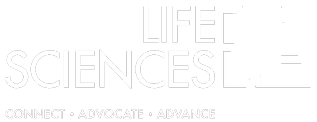NAIC unveils medical loss ratio rules under health reforms
Health Care Reform
Source: Business Insurance
21-Oct-2010
By Joanne Wojcik
WASHINGTON—The National Assn. of Insurance Commissioners adopted a model regulation Thursday that includes definitions of which medical expenses can be counted toward insurers’ medical loss ratios under the Patient Protection and Affordable Care Act.
Under PPACA, insurers operating in the large group market must spend at least 85% of premiums on medical services and quality improvement, rather than on administrative costs or profits. The MLR for individual and small group plans must be at least 80%. Insurers that spend less than these minimums on patient care will be required to rebate to plan members a portion of the premium paid for coverage.
Many of the definitions included in the model MLR regulation, which was passed by the NAIC’s Executive and Plenary committees meeting in Washington, are based on the proposed financial template, or “blank” that was approved by the NAIC in August, according to a statement issued by the Kansas City, Mo.-based group of state insurance regulators.
The NAIC’s MLR model regulation now will be submitted to the U.S. Department of Health and Human Services, which will decide whether to adopt the proposals as regulation or to make changes. HHS Secretary Kathleen Sebelius has said the agency would like to act on the regulations this month.
Under PPACA, insurers are required to implement the spending changes by Jan. 1, 2011. However, in an Oct. 13 letter to Secretary Sebelius, the NAIC recommended that they be phased in to prevent market disruption.
“Health insurance companies in some markets will need a transitional period to comply with the 80% MLR limit. In the absence of the transitional period, the markets of some states are likely to be ‘destabilized,’” the NAIC letter states.
Under the NAIC’s model regulation, health insurer MLRs will be calculated by dividing incurred claims plus any expenses to improve health care quality by earned premiums, minus federal and state taxes and licensing or regulatory fees.
However, Washington-based America’s Health Insurance Plans issued a statement saying it is concerned that expenses attributable to quality improvement is being defined too narrowly. It also is disappointed that fraud prevention and detection programs and initial startup costs associated with implementing a new, more expansive, health care claims coding system were not included in the NAIC’s proposed MLR calculations.
Health insurers have been transitioning to a new ICD-10 coding system from the existing ICD-9 coding system for the past several years, and want to include those costs in the MLR calculations, an AHIP spokesman said.
The Alexandria, Va.-based Independent Insurance Agents & Brokers of America Inc. said it was disappointed that agent compensation was not excluded from the proposed methodology for calculating MLRs.
“If the NAIC and HHS do not fix this language, the role of the agent in the health care delivery process could be diminished, which would lead to market disruption and considerable consumer confusion,” said Charles E. Symington Jr., senior vp for government affairs.




